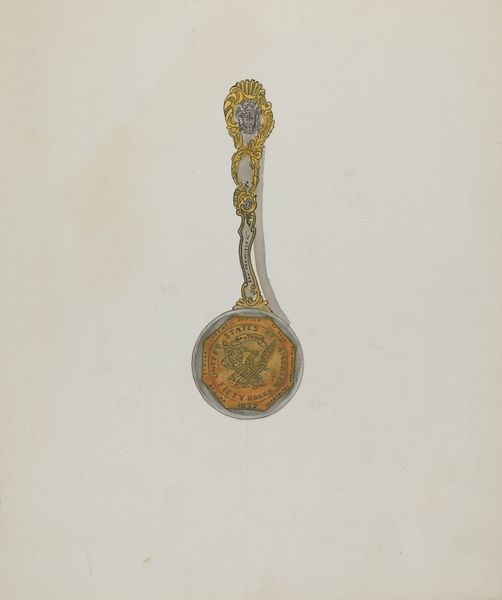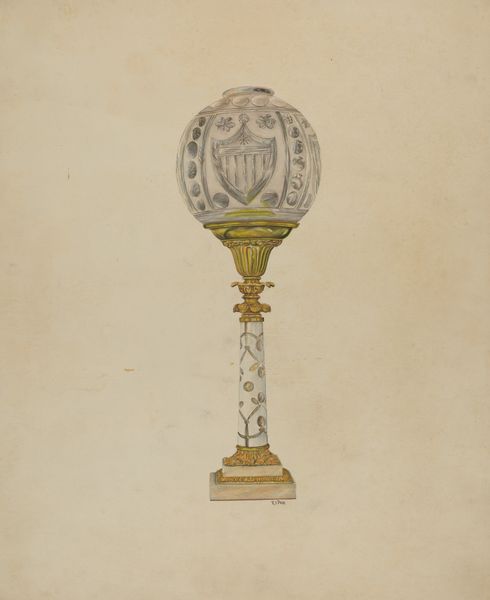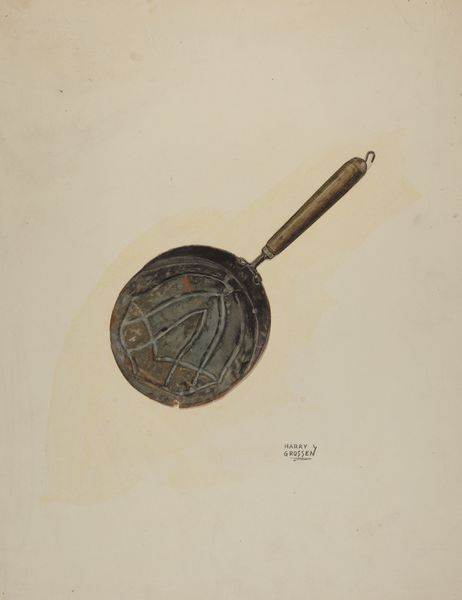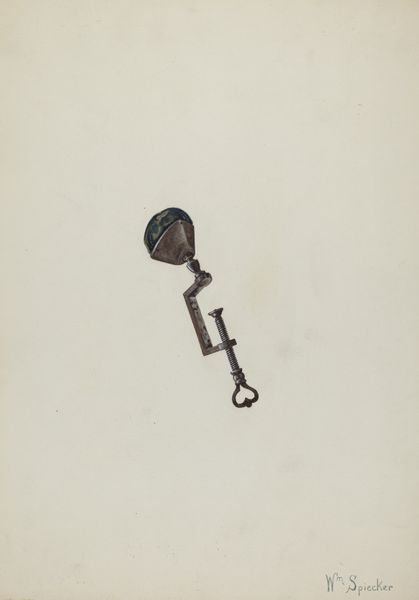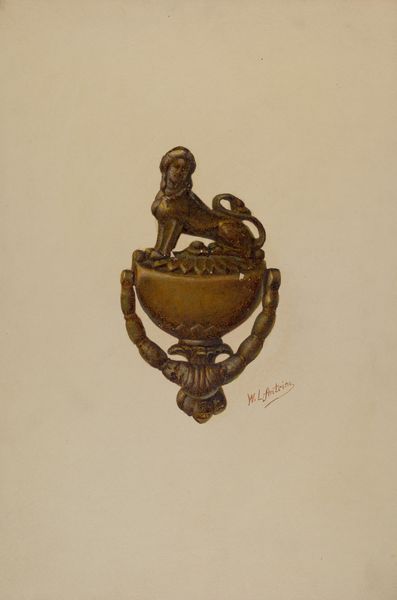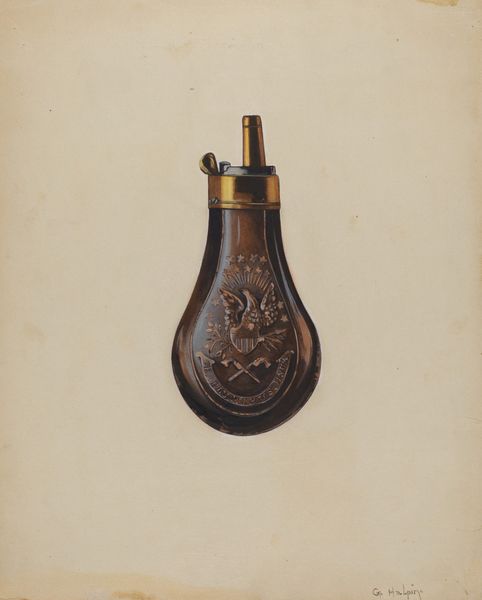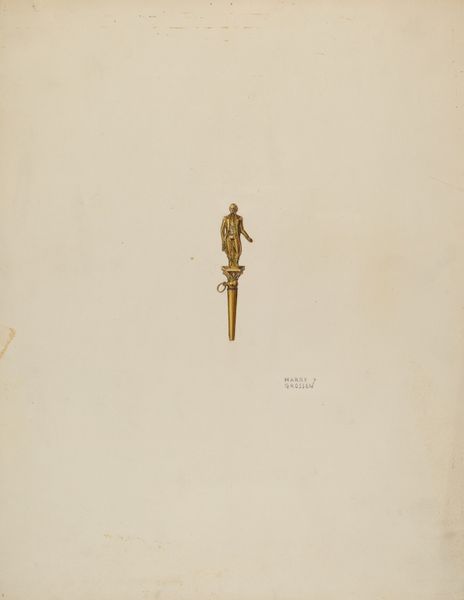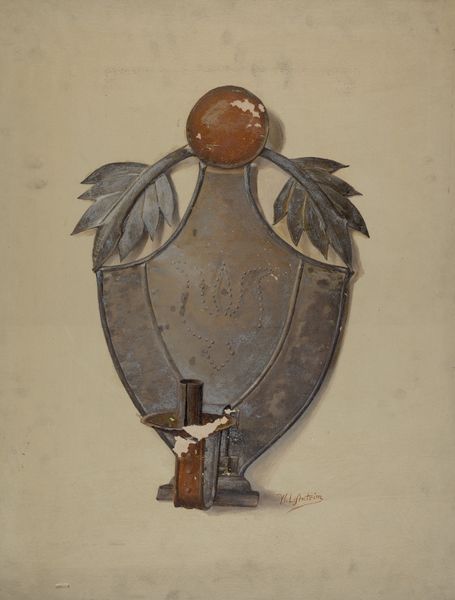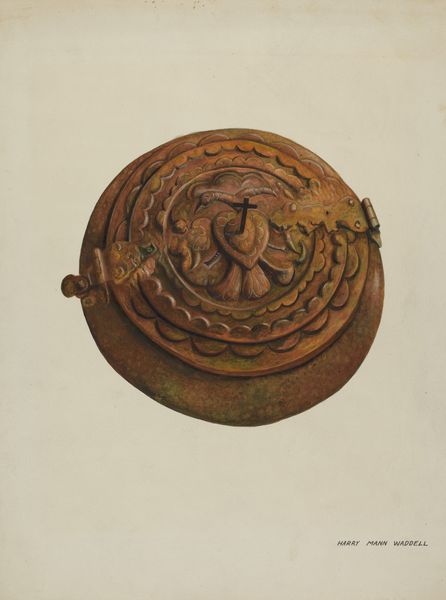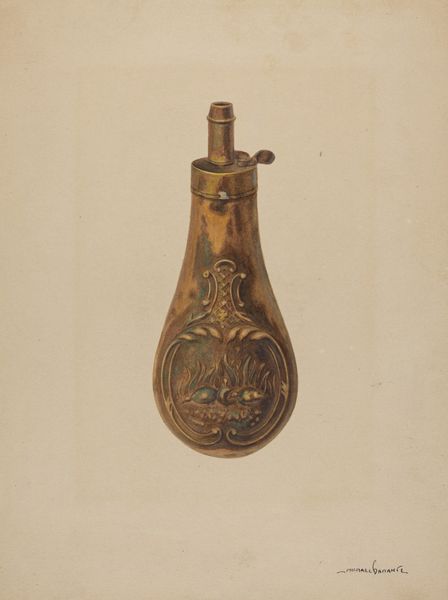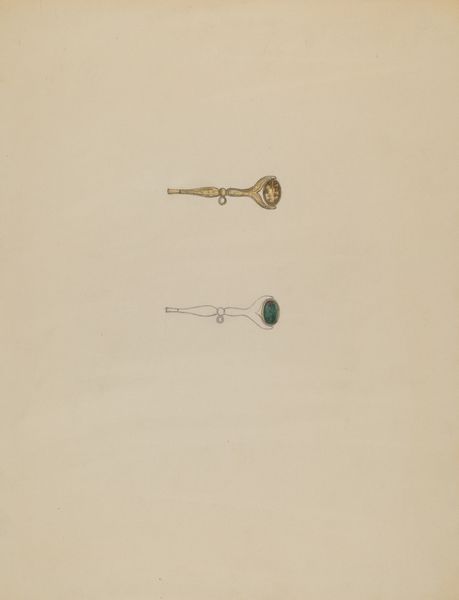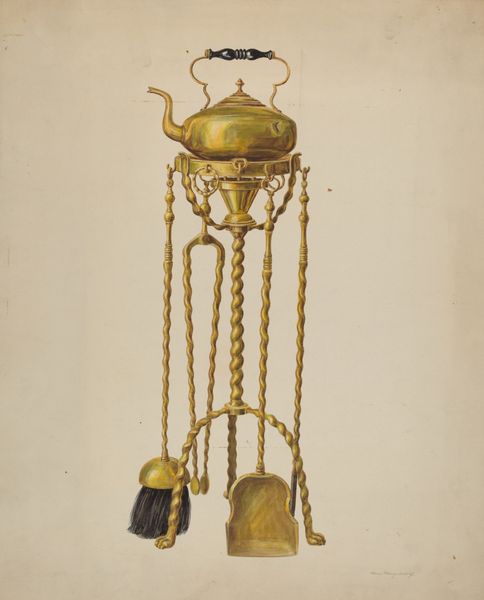
drawing, pencil
#
portrait
#
pencil drawn
#
drawing
#
charcoal drawing
#
pencil drawing
#
pencil
#
portrait drawing
#
history-painting
#
academic-art
#
miniature
Dimensions: overall: 28.2 x 22.9 cm (11 1/8 x 9 in.) Original IAD Object: 5 5/8" long
Copyright: National Gallery of Art: CC0 1.0
Curator: Here we have “Souvenir Spoon,” a pencil drawing created around 1936. What strikes you initially about this piece? Editor: Well, my first thought is that this piece feels almost like a historical artifact rendered with incredible detail. It evokes the pomp of the monarchy and the symbolism of objects during times of political significance. There’s a regal, almost nostalgic quality here, but with a hint of impermanence, given the medium. Curator: It’s intriguing because it depicts a commemorative spoon design, likely created to honor the Hawaiian monarch, King Kalākaua, particularly referencing 1883, a significant year of his reign. We see Kalākaua's portrait and a figure holding what looks like a royal standard. Editor: The spoon as a medium itself raises interesting questions. Souvenir spoons were hugely popular around this time as objects to remember moments. But the commodification of an object with a Black or Indigenous likeness seems complicated. Was it empowering to see King Kalākaua’s face on this spoon, or was he made a curio to be consumed and displayed? How was that portrait received across social classes? Curator: It's worth noting that these spoons often appeared during times of expanding colonialism and tourism, embedding them within global political currents. Consider also how museums and world fairs exhibited such objects, further shaping public perceptions of other cultures. Editor: Absolutely. It feels as though the spoon, while meant to celebrate the Hawaiian monarchy, becomes intertwined with external political and marketing forces—the West appropriating another culture's likeness, for a price. It almost feels as though the cultural identity is diluted. Curator: Looking at it as an artifact within these layers adds considerable nuance. Editor: This changes my whole reading of it; it pushes me to think critically about the dynamics embedded in such representations, especially in relation to colonialism. Curator: Examining such pieces invites necessary discourse about the history of cultural representation and the continuing impact of political legacies on visual culture. Editor: Agreed. Considering the broader context, and the place of representation helps to create new dialogues that speak to the current social and cultural moments in which art is being appreciated.
Comments
No comments
Be the first to comment and join the conversation on the ultimate creative platform.

